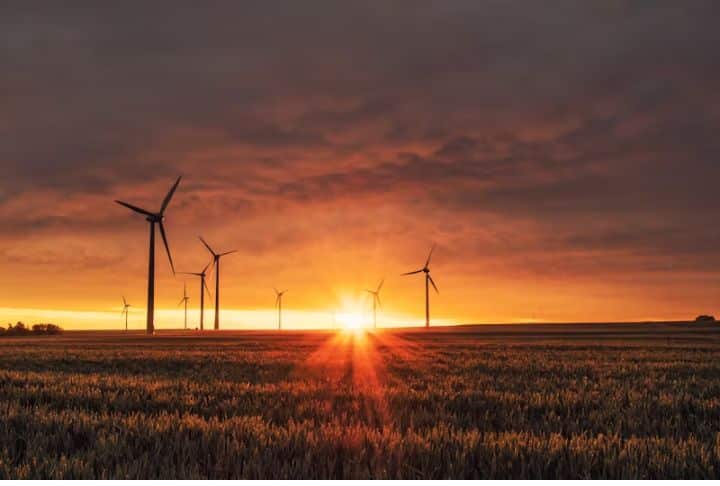Introduction.
The urgency of climate change has sparked a global demand for innovative technologies aimed at mitigating its effects and fostering resilience. Climate tech—defined as technology that aims to reduce greenhouse gas emissions or address the impacts of global warming—is rapidly emerging as a critical sector. From carbon capture and renewable energy to AI-powered environmental monitoring and climate-resilient agriculture, climate tech innovation is at the forefront of the fight against ecological collapse.This article explores the landscape of climate tech, key innovations transforming industries, the flow of investment into the sector, and the challenges and opportunities shaping its future.

1. The Rise of Climate Tech Climate tech has grown from a niche interest into a multi-billion-dollar industry. In 2021 alone, global investment in climate tech startups exceeded $60 billion, and the momentum continues. Governments, venture capitalists, corporations, and entrepreneurs recognize that climate solutions not only serve the planet but also represent high-growth markets.The sector encompasses a broad range of technologies across multiple industries including energy, transportation, agriculture, construction, and manufacturing. Unlike clean tech of the 2000s, which focused heavily on solar and wind power with mixed results, modern climate tech is more diversified, data-driven, and aligned with sustainability goals and ESG (Environmental, Social, and Governance) metrics.
2. Key Areas of Innovation
A. Renewable Energy At the heart of climate tech is the transition to clean, renewable energy. Wind, solar, and hydroelectric power have become increasingly cost-competitive with fossil fuels. Innovations such as peroskite solar cells, floating wind farms, and enhanced geothermal systems promise to make renewable energy even more efficient and scalable.
B. Energy Storage and Smart Grids Energy storage is critical for addressing the intermittency of renewable power. Breakthroughs in battery chemistry including solid-state batteries and flow batteries—are extending storage duration and lowering costs. Coupled with AI-enabled smart grids, these systems optimize power distribution and reduce waste, allowing for more reliable and resilient energy networks.
C. Carbon Capture, Utilization, and Storage (CCUS)Carbon capture technologies aim to trap CO₂ from industrial processes and the atmosphere. Companies like Climeworks and Carbon Clean are developing direct air capture (DAC) systems that can remove CO₂ and either store it underground or convert it into useful products like building materials or synthetic fuels.

D. Green Hydrogen Hydrogen, when produced using renewable energy (green hydrogen), offers a clean fuel alternative for sectors that are hard to electrify, such as aviation, shipping, and heavy industry. Advances in electrolysis efficiency and infrastructure development are helping to scale up its production and distribution.
E. Sustainable Agriculture and Food Tech Agriculture contributes significantly to emissions through methane, land use, and fertilizer production. Climate tech innovations in this space include precision agriculture using satellite data and IoT devices, lab-grown meats, plant-based proteins, and regenerative farming practices that restore soil health and sequester carbon.
F. Circular Economy and Waste Reduction Innovations that support recycling, up cycling, and waste-to-energy technologies are transforming how we manage resources. Startups are engineering biodegradable materials, developing AI-powered recycling systems, and converting waste into biofuels or building materials.
3. The Role of Digital Technologies Digitalization is a major enabler of climate tech. AI, machine learning, blockchain, and IoT are being integrated across solutions to improve accuracy, traceability, and scalability. AI and Machine Learning are used for climate modeling, optimizing energy use in buildings, and forecasting renewable energy generation.Blockchain ensures transparency in carbon credit markets and supply chain emissions tracking.IoT Sensors are deployed in forests, oceans, farms, and urban infrastructure to monitor environmental changes in real-time and trigger adaptive responses.

4. Climate Tech Investment Landscape Investors are increasingly channeling capital into climate tech, spurred by rising climate risks and government incentives. Climate-focused funds are growing, and ESG investing is reshaping financial markets.Major tech firms such as Microsoft, Amazon, and Google have committed billions to net-zero initiatives and startup accelerators. In parallel, public funding through climate policies like the Inflation Reduction Act in the U.S. and the European Green Deal is catalyzing research and development.However, the investment landscape remains uneven. While sectors like energy and transport receive robust funding, areas like carbon removal, sustainable materials, and water management lag behind due to perceived higher risks or longer timelines for ROI.
5. Challenges to Scaling Climate Tech Despite the momentum, climate tech faces several hurdles:Regulatory Barriers: Inconsistent policies and permitting delays can slow adoption.Infrastructure Gaps: Many solutions require new infrastructure, such as hydrogen pipelines or EV charging networks.Technological Maturity: Some technologies are still in early R&D phases and need de-risking to attract investment.Market Fragmentation: A lack of standardization and interoperability between systems hinders scale.Equity and Access: There’s a risk that climate tech could widen social inequalities if solutions are not affordable or accessible to all communities.Addressing these challenges requires coordinated action between the public and private sectors, global cooperation, and inclusive policy design.
6. The Road Ahead: Future Trends The next decade is critical for scaling climate tech and achieving global climate goals. Key trends to watch include:Climate Fintech: Tools to democratize carbon offset purchases, climate insurance, and ESG investing.Decentralized Energy Systems: Community-owned micro grids and peer-to-peer energy trading.Climate Adaptation Tech: Technologies focused on resilience, such as flood sensors, heat-resistant crops, and wildfire detection systems.Bioengineering: Engineered microbes and plants to absorb carbon or resist drought.Geoengineering: Controversial but increasingly discussed methods like solar radiation management or ocean fertilization.Policy will play a pivotal role, with carbon pricing, green procurement, and subsidies accelerating innovation. Meanwhile, public awareness and consumer demand for sustainable products will push companies to adopt climate tech solutions.

Conclusion.
Climate tech innovation represents one of the most vital frontiers in the global response to climate change. With transformative potential across energy, industry, agriculture, and infrastructure, these technologies offer both environmental salvation and economic opportunity. As climate impacts intensify, the imperative to invest in, scale, and deploy these solutions becomes ever more urgent.The future of climate tech lies not only in the ingenuity of scientists and entrepreneurs but in our collective willingness to support, adopt, and demand change. With sustained momentum, climate tech can help create a cleaner, fairer, and more resilient world for generations to come.—Let me know if you’d like this formatted as a PDF or if you want to tailor the article to a specific audience—like students, policymakers, or investors.




